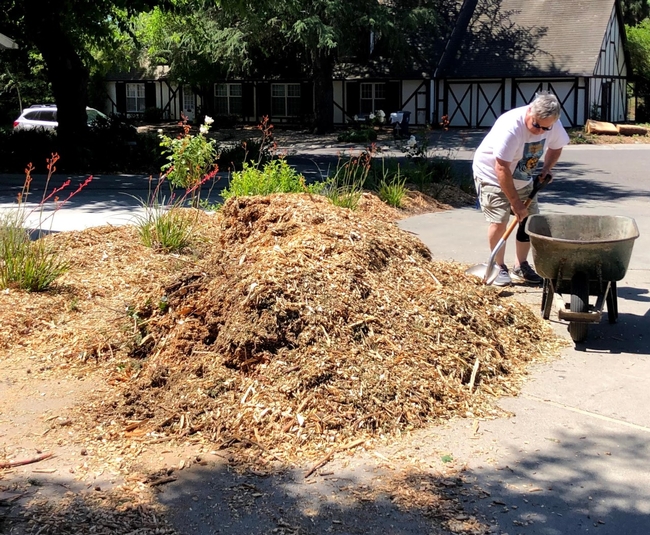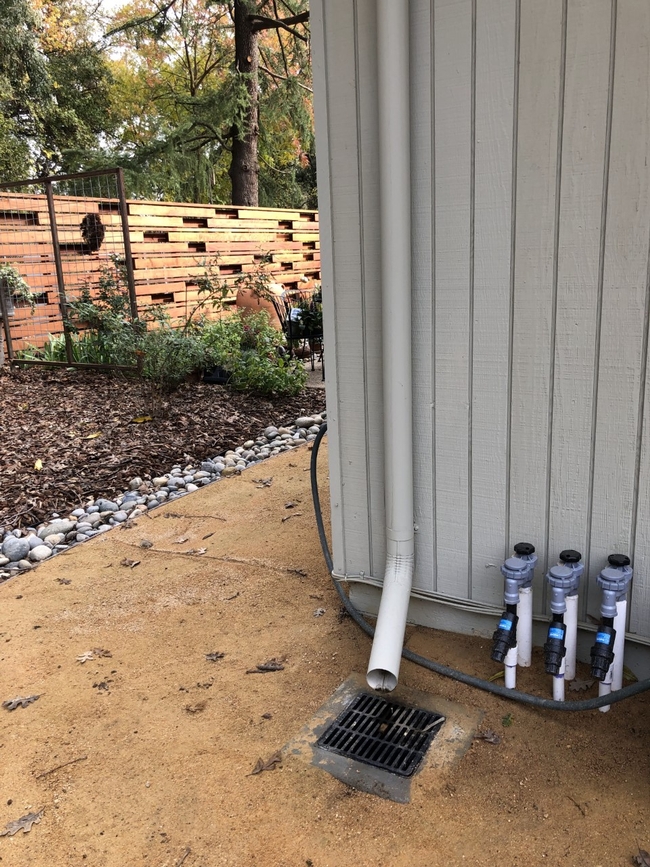The rainy season can be a mixed blessing. If your home garden landscape is well designed to maximize rainwater storage, then rain is a blessing. If your landscape is poorly designed, or has too much impervious surfaces, then rain can be a curse. Whatever your situation, however, take heart! Small adjustments can be made to prepare for the next storm, though some projects will take longer and require work done in the dry season.
Start by observing your garden during rain events, looking for ways to prevent rain, or stormwater from leaving your property. Study your garden's watershed. The goal is to keep all rainwater onsite. Healthy soil full of organic matter, properly mulched landscape beds, disconnected downspouts, swales or rain gardens, permeable paths and surfaces, rain barrels, rain chains, trees, trees, and more trees, will help slow the flow and saturate your soil with rainwater, without flooding or creating messy muddy areas.
Healthy Soil is Key- If you are a serious gardener, then you already know the importance of organic rich soil,
“Organic matter (OM) comprises a small percentage of most soils by volume, however, it plays a crucial role in soil health and ecosystem services because of its interaction with many other soil properties. Soil OM increases the soil's water holding capacity, cation (an ion or group of ions) exchange capacity, fertility, microbial abundance and diversity, and soil structure. … Soil OM is the largest pool of terrestrial carbon, containing 77% more carbon than above-ground vegetation, playing a significant role in climate regulation.”
Which simply said, means soil's organic matter is key to a healthy garden, and a healthy planet.
Watch Gabe Brown, author of the book, From Dirt to Soil: One Family's Journey into Regenerative Agriculture on YouTube, “Regeneration of Our Lands-A Producer's Perspective”- if you want to learn more about pore spaces, water retention, and regenerative ag. Let the revolution begin at home!
Downspouts- Surprisingly, for every inch of rain that falls on a rooftop area of 1,000 square feet, you can expect to collect approximately 600 gallons of rainwater. So, recent October rains in Lodi, where 5.5 inches of rain fell in one 24-hour period, you could say that 3,300 gallons, or 4.4 cubic feet of water fell from 1,000ft rooftops in a day. It's no
Rain Gardens and Swales- A typical residential rain garden averages from 100-300 square feet, and is 4- 8 inches deep, depending on soil type, percolation rate, and the amount of water which will drain to the site. Placing your swale or rain garden near a downspout is an easy way to capture water till it percolates and is banked in the soil. Keep the garden at least 10 feet from your house and consider carefully which plants are planted in this rain garden. Learn more about creating a rain garden.
- Other rainy day thoughts:
Pesticides and Fertilizers- Always store in a dry place. Runoff from our gardens often carry toxic pesticides and herbicides to nearby waterways. - Monitor Ground Moisture- Especially under eaves, and patios.
- San Joaquin Valley Planting Chart
Remember, every drop of water soaked into your garden's soil, is a step towards drought recovery.
If you have gardening questions, contact the Master Gardeners at 209-953-6112 or visit our website at ucanr.edu/sjmg.
Photos courtesy of Kathy Grant